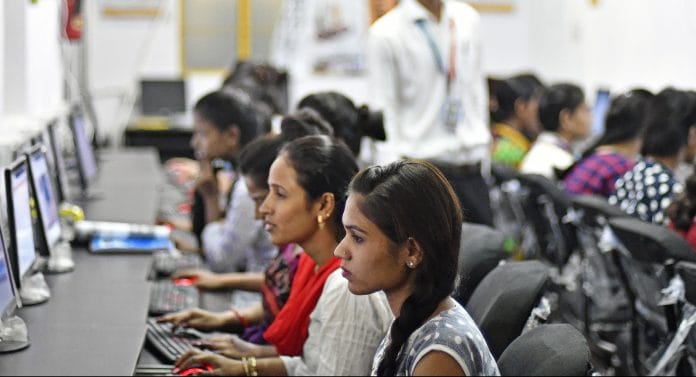Industrial Training Institutes have rarely made it to the Union Budget speech, but this time things were different. In her July 23 speech, Finance Minister Nirmala Sitharaman put “employment and skilling” second on her list of nine Budget priorities, just after agriculture. The upgrade of ITIs and a slew of job creation schemes through various collaborations formed the core of the “employment and skilling” theme, making this Budget markedly different from the rest.
It’s perhaps a matter of chance that ITIs, which were started soon after India’s independence as a way to create employment, are being brought centre stage with the same goal as the country prepares for Viksit Bharat in 2047, marking 100 years of Independence. While ITIs have come full circle, where do they stand in terms of their primary objective of imparting engineering and non-engineering trade skills to high-school students and undergraduates for creating employment?
Even as the Ministry of Skill Development and Entrepreneurship in the Union government makes policies that govern ITIs and the entire gamut of skill network, most of these institutes are run by state governments or private entities authorised by states. So, a mismatch between the central policy/curriculum and the states’ capacity to train and deliver on the job front is obvious. A lack of skilled trainers, resource crunch, ineffective placement methods, outdated curriculum, and poorly equipped labs are some of the problem areas that ITIs face across states.
In fact, decades after the establishment of ITIs, setting up effective placement cells in these institutes continues to be a big ask. Last August, the Parliamentary Standing Committee on Labour & Skill Development urged the Skill Development Ministry to facilitate the setting up of placement and entrepreneurship cells within ITIs. Although the committee suggested making it mandatory for ITIs to upload data on the employment status of their graduates, only some states are fully following this recommendation. While the parliamentary committee also highlighted the need to refresh the courses and curricula to align with industry requirements, such as in the areas of data analytics and artificial intelligence, much of this is yet to take off in a meaningful way.
The NITI Aayog too came out with a study last year, suggesting a changeover of the ITI ecosystem. The study noted the weaknesses in the current system in terms of infrastructure, regulation and course content, while proposing a seven-pronged strategy, including setting up of a central board for the recognition of vocational education.
However, against this underwhelming backdrop, there are some bright spots. According to news reports earlier this year, Delhi’s ITIs achieved a placement rate of 72.3 per cent in the latest academic year, with many students getting placed with top companies. A few ITIs in Delhi managed to attain placement rates as high as 94 to 97 per cent. Down south in Tamil Nadu, placement data shows an 80 per cent placement rate in 2023, up from 77.4 per cent in the previous year.
And, within a few days of the Union Budget, which focused on the theme of employment, automobile company Hyundai announced new employment opportunities for several hundred ITI students across nine states as part of its skill development scheme. Around the same time, Telangana government partnered with Tata Technologies to upgrade 65 government ITIs into what it called centres of excellence.
In the run-up to the Budget as well, there were some upbeat instances related to ITI. In Maharashtra, for example, several ITI students were absorbed by firms overseas, from Germany to Japan, Saudi Arabia to Israel. The state is also setting up international placement centres. Recently, Germany reportedly recruited some 4,000 professionals from Kerala institutions, including ITIs for a railway modernisation project. And, ITI Shikohabad, one of the recently constructed government industrial training centres in Firozabad, Uttar Pradesh, started new courses, including on electric vehicles.
ITIs were started by what was known as the Ministry of Rehabilitation in 1948 and were meant for displaced individuals. It was called Vocational Training Centres back then. Industrial Training Institute, Arab-ki-Sarai, in Delhi’s Nizamuddin area is among the oldest ITIs in the country, having undergone many name changes through the years.
The ITI journey of several decades, through many ups and downs, is captured through these numbers. In around 14,993 government ITIs in India, there were about 2.5 million available seats in 2021-22. The number of trainees was pegged at 1.2 million. If it helps, new enrolments rose from 9,46,000 in 2014 to 12,40,000 (1.2 million) in 2022. In the absence of any comprehensive database on ITI placement, here’s the latest from Delhi’s Pusa ITI, a popular institute. In 2022, out of a total of 659 students, 409 were placed, 101 went for higher education, and 149 remained unplaced.
While numbers do tell a story, the instances of some states and some institutes trying to do things differently are equally important. In the end, higher Budget outlays alone can’t make a difference. Rather, the Centre and the states have to come on the same page with a new vision in search of a successful job story.
Nivedita Mookerji @nivmook is the Executive Editor of Business Standard. Views are personal.






